F
fact family
Four related facts: two addition and two subtraction number sentences made using the same three numbers. For example, using 3, 4, and 7 the fact family is: 3 + 4 = 7; 4 + 3 = 7; 7 − 3 = 4; 7 − 4 = 3.
fair share
Splitting into equal groups or parts. For example, if there are 2 children and 7 cookies, each child's "fair share" is 3 and one-half cookies. (See also divide.)
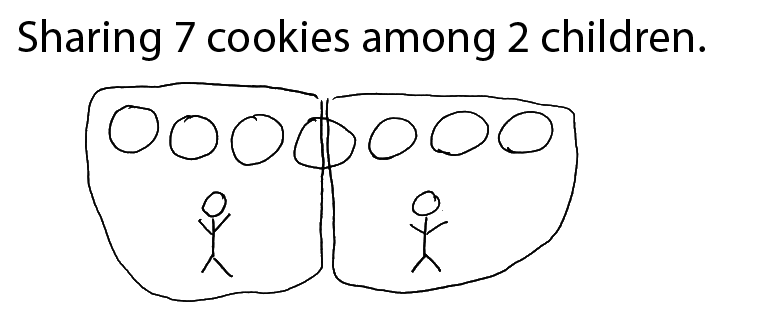
false number sentence
A number sentence in which the numbers on both sides of the equal sign do not have the same value. For example, 3 + 4 = 3 + 2 is a false number sentence.
Fewest Pieces Rule
Using the least number of base-ten pieces to represent a number. (See also base-ten pieces.)
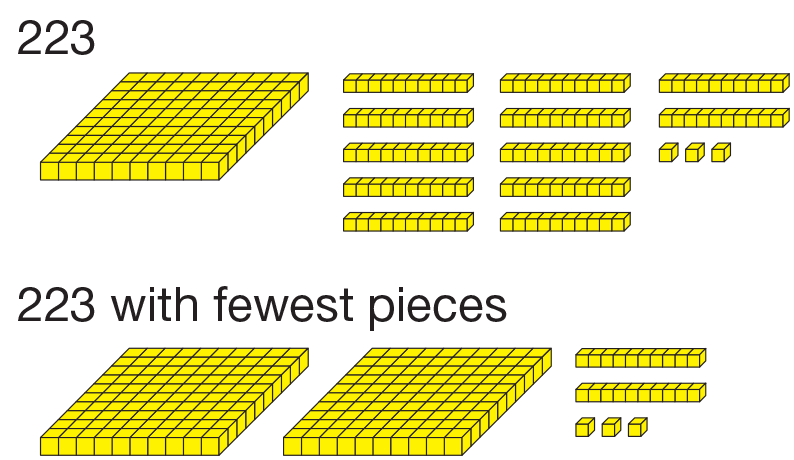
fixed variable
The variable in an experiment that does not change and keeps everything "fair." They are also called controlled variables.
flat
One of the base-ten pieces that is often used to represent 100. The block is made up of 100 bits. (See also base-ten pieces, bit, skinny, and pack.)
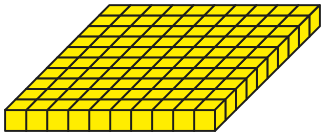
foot
A unit of length. One foot is equal to 12 inches. There are 3 feet in a yard. The plural of foot is feet. (See also inch and ruler.)

fourths
Four parts of a whole that are the same size. (See also fair share and one-fourth.)
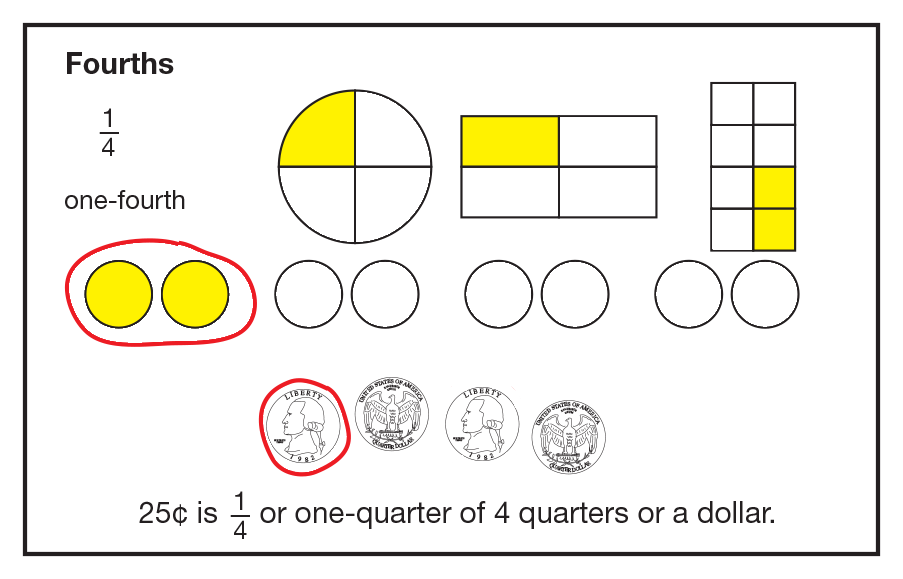
fraction
Part of a whole in which all parts are equal or "fair shares." For example, the
fraction 
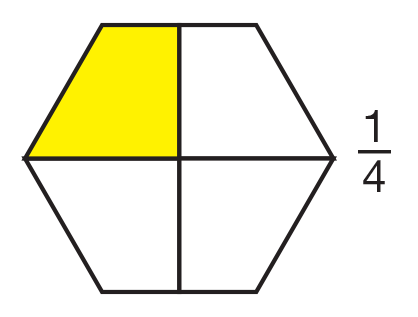
friendly numbers
Numbers that are easy to calculate to help find a reasonable estimate. In the examples, friendly numbers are used to estimate a sum or difference. (See also benchmark numbers.)









